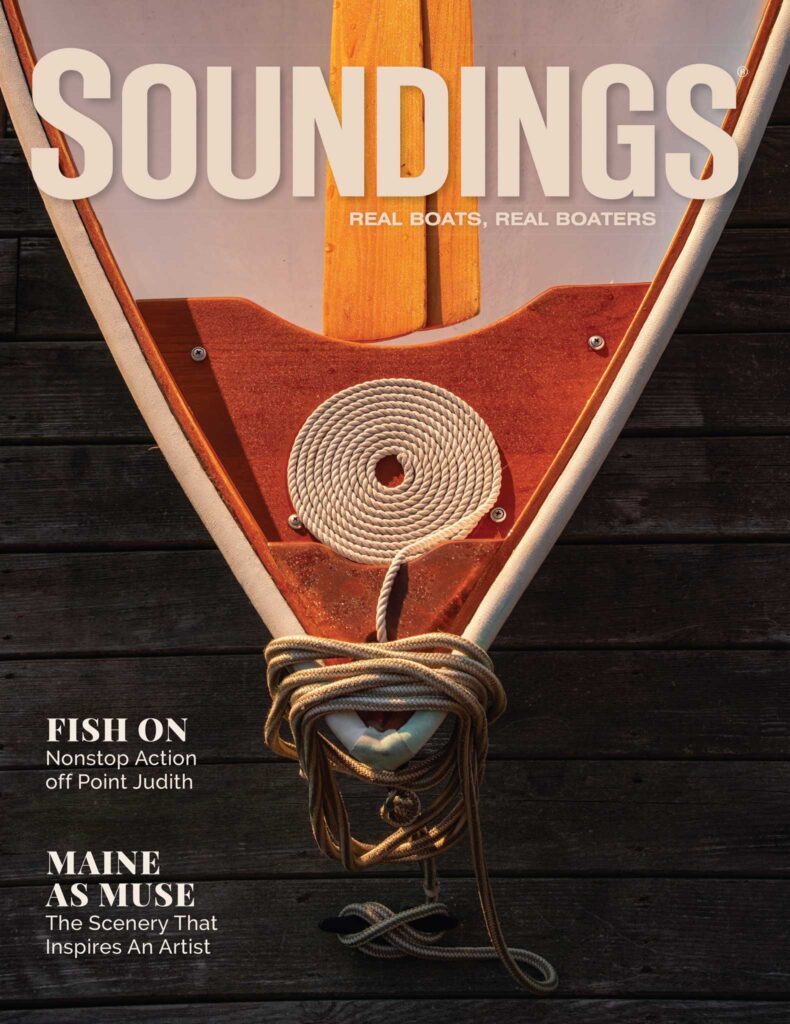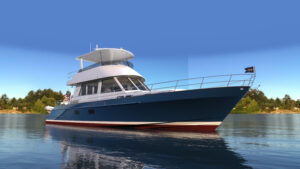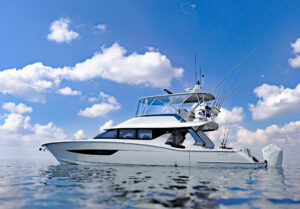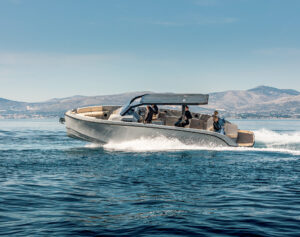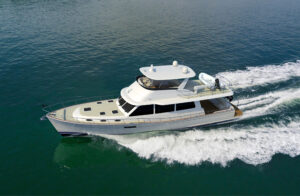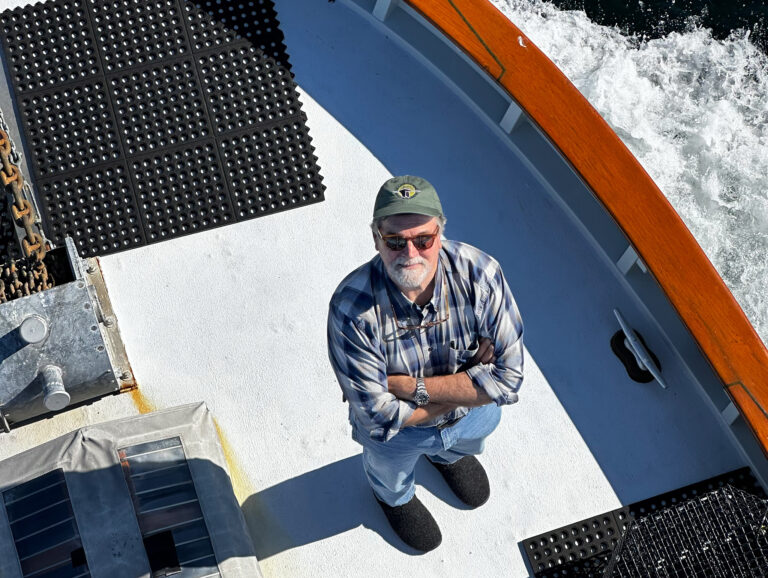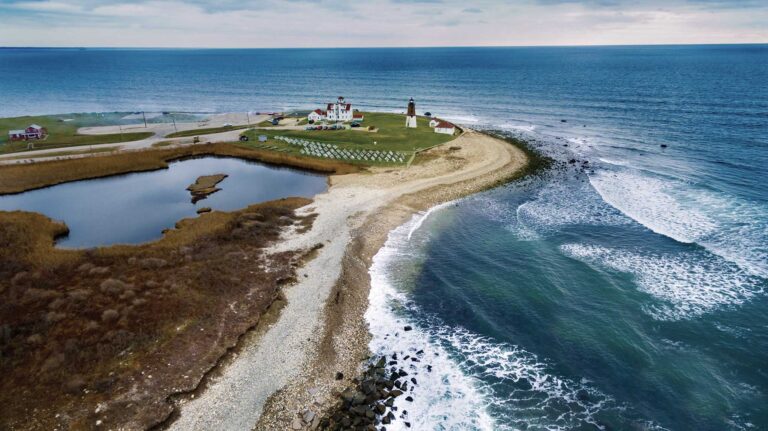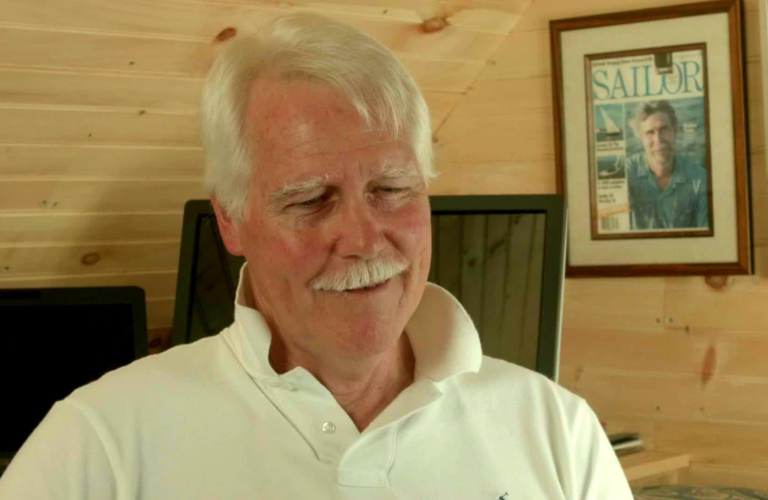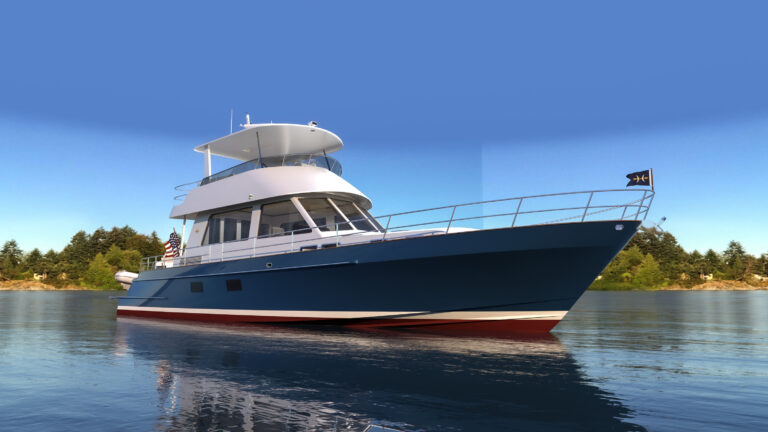Passionate anglers and forward-leaning boatbuilders continually drive change and new products. Here’s a look at what’s trending from angling expert Gary Caputi.

Innovation
“New-product innovation has been driving Viking’s success since December 2008,” says Pat Healey, executive vice president of Viking Yacht Co. “Since the major downturn, we have replaced our entire line with new models that offer better performance, increased speed, reduced fuel consumption and creative interior designs. At Viking, R&D has always been a major capital investment. In the years following the recession, we devoted $3.5 million annually to R&D, and today that figure surpasses $7 million.”
Healey says that when Viking introduced the 82 Convertible in December 2008 many pundits thought the company was taking an incredible risk; it is now building hull No. 23. If that’s not a success story, consider that the company has sold 21 of its 70 Convertible since 2010 and that Viking’s 42 Open and Convertible, which also debuted in 2010, have sold 45 units. Those three models make up only a fraction of the fleet.
“We’re building our boats lighter, stronger and faster,” Healey says. He mentions “finding speed” in closed infusion molding, carbon fiber laminates, new prop and rudder designs, even lightweight granite countertops and slicker bottom paints. It all adds up.

With sales brisk across the Viking line, we asked Healey what trends he sees in the larger sportfish boat market. He believes pod drives will continue to have a major effect. “Pods are becoming more accepted in smaller models, but the concept will require more evolution for higher-horsepower applications,” Healey says. “I have a Cummins/Zeus pod 42 behind my house that is so simple to operate my 10-year-old daughter runs it. She thinks it’s great that she can do what her daddy does, and isn’t that what it’s all about? I would say there is a good chance that all our boats will be pod-driven in the next 10 years. Our new 52 is designed to be built either way by simply changing out hull mold components.”
Changing the game plan
“Historically, Contender has been known for building hard-core tournament fishing boats,” says Les Stewart Jr., marketing director for Contender Boats, “and we still build tournament-ready models today, but we have responded to market demands by developing multipurpose, family-oriented models we call hybrids. You can actually fish tournaments with them one weekend and turn around and take the family for a picnic at a local sandbar hangout in the bay the next. We offer forward seating, custom lounge modules and finer, plusher, more resilient upholstery with greater attention to overall fit and finish.”
So what has the approach done for sales? They have been on the upswing for the past three years and continue to improve. In 2012 Contender was building four boats a week, and that has improved to five a week in 2013, a far cry from the heady days when the company was building 500-plus boats a year but a dramatic improvement from the Great Recession. And Stewart says the company has orders to maintain the current pace through year-end and beyond, with the majority presold and the rest going into dealer inventory.

“The current pace of sales has been good for us,” Stewart says. “Along the way we learned how to make the company profitable with lower sales volumes, and at this point we are not rushing to increase production schedules beyond this year’s pace. If demand continues to grow, we will adjust accordingly.”
But it’s not just the hybrids that are driving sales. New models, new hull designs and beautifully executed products that showcase the highest standards are contributing to the brand’s resurgent growth. “Contender currently offers 21 models from 21 to 40 feet, including our remarkably popular new 25-foot bay boat,” Stewart says, “and we offer most in conventional deep-vee or step-hull versions. In testing, our advanced dual-step hulls offer, on average, an 18 percent increase in fuel economy and a 10 percent boost in top-end speed. They ride flatter but soft and excel in rough-water performance, especially when you push the throttles up.”
Not surprisingly, the trend in hull preference has been to the step models, and not just by a small margin. They are outselling conventional deep-vee hulls by a 9-to-1 margin. And although the bay boat is nudging out the other models for sales volume, Stewart says he sees a definite trend in increasing sales of models 30 feet and larger.
Bigger center consoles
Regulator Marine is a family-owned-and-operated builder that’s celebrating its 25th anniversary. Since the introduction of the first model, a 26-foot center console, company owners Joan and Owen Maxwell have seen their share of highs and lows. The highs have been the unequivocal market demand for their boats, and the lows have revolved around the ups and downs of the economy.
Since Regulator introduced the 26 and until it was taken out of production a few months ago, the company had delivered 1,525 of them — not bad for what was a start-up on a wing and a prayer in the beginning. “The 26 was the beginning for us and a success beyond our wildest dreams,” says Joan Maxwell, the company president. “But it was getting tired, and the introduction of the 28 CC three years ago was the handwriting on the wall. We incorporated years of suggestions from our 26 owners into the design of the 28, and it quickly became our best-selling model.”
Regulator has introduced a new 25 CC built with the same upgrades in layout, performance and styling that made the 28 a success. It also is redesigning the venerable 23 CC with similar upgrades for a debut in 2014.
“As far as trends, we see a growing demand for larger center console boats with more amenities,” says Owen Maxwell, vice president of product development. “We see a lot of experienced boat owners stepping down from express and convertible fishing boats to large center consoles, but they want them with triple outboards and lots of creature comforts. We currently offer the 34 with an optional cruising package designed for that market. The package includes a full head, shower and sink, refrigerator, microwave, storage cabinet and a berth that sleeps two that extends forward. But we are planning on addressing that trend further with the introduction of an even larger version in the near future.”
Versatile boats
Scott Deal, CEO of Maverick Boat Co., has been at the forefront of the flats and bay boat market since starting Maverick in 1984. One success led to another, and today his company builds four brands of fishing boats: Maverick, Hewes, Pathfinder and Cobia. The acquisition and redesign of the Cobia line is his most recent foray into the broader fishboat market.
Quality, performance and value are the company’s guiding principles, and the growth Cobia has enjoyed is a result. “A recent SSI study on the flats-boat market showed a disturbing trend,” Deal says. “Sales are currently at about 25 percent of where they were 10 years ago, and most of the companies in that segment of the market are no longer in business. Granted, these are highly specialized boats that address a small portion of the fishing community, but I believe the ascendancy and broader appeal of the bay boat has had as much to do with the decline as the economy. That’s not to say the flats boat market is dead. We recently redesigned the Hewes Redfisher line, and sales are up 125 percent year-to-date.”
Deal mentioned that the bay-boat market is growing because the boats are the Swiss Army Knife of saltwater fishing boats, especially in the larger sizes. For example, the new Pathfinder 2600 HPS is a step-hull 26-footer that can handle as much as 350 hp. You can sneak it into 15 feet of water for redfish and trout one day, run it offshore for dolphin or sailfish the next, and still use it to take the kids wakeboarding or have a family picnic. “Versatility sells,” Deal says.
Versatility is also the watchword for Cobia. Deal’s goal was to build a boat to meet what he wanted for offshore, and he is a pretty intense fisherman, whether he’s on the flats, in bays or outside. “The boat has to perform all the required fishing functions but also needs to be versatile enough to be comfortable for my family to come along,” he says. The Cobia 296 CC is first and foremost a fishing boat, but it follows the trend to a tee, with disappearing seating arrangements, a roomy head and shower in the console, and soft upholstery with enough seating for the entire family.
Overall, Maverick is doing well with a multibrand approach that has been keeping the plant running at full production.
March 2014 issue

